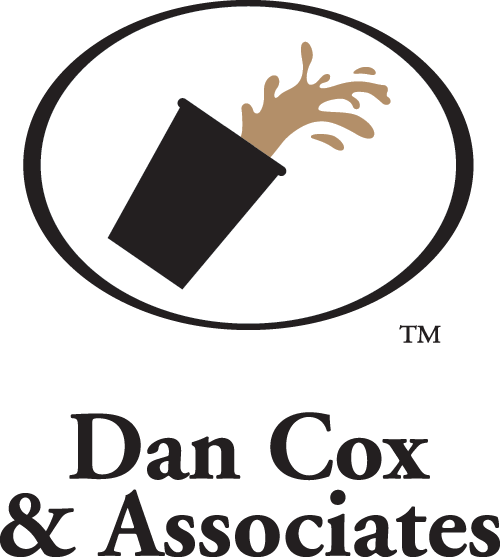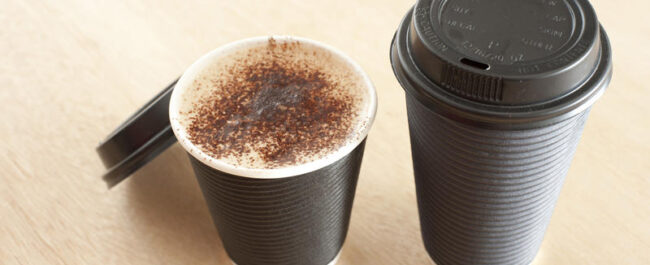A Tale of Two Cups: Quality Cups Contribute to Positive Customer Experiences
A quality hot beverage to-go cup can be the difference between a spill, burn and lawsuit, and a safe and positive customer experience. When considering the choice of cup for your to-go hot beverages, there is more than just cost to consider. A quality cup that has been purchased for spill prevention in mind, will keep both customers and staff safe, and keep your business protected from lawsuits.
There are two main types of cups used in food service for serving hot beverages. The polystyrene cup and the paper cup. These cups are different in many regards.
Polystyrene cups, sometimes called the brand name Styrofoam, have both positives and negatives. Polystyrene has been noted by consumers to feel sturdier and is more thermally insulating than other cups. The insulating property of polystyrene means that less heat is transferred to the consumer’s hands. Protecting the consumer from the heat of the beverage allows the beverage to be carried comfortably and eliminate the need for a cup sleeve or double cupping. It can also prevent a consumer from accurately understanding the heat of the beverage, causing a drink to be consumed before it was a comfortable temperature, or causing a consumer to be more careless with a beverage. This can be dangerous, as care should always be taken when handling a hot beverage.
There has been a notable phase out of polystyrene cups in hot beverage service. Polystyrene cups have even been banned in a number of states, and cities in the US, and in countries around the globe. This is due to several factors, including consumer concerns of health risks when polystyrene is heated or reheated, and environmental concerns with biodegradability and wildlife productions. This consumer perception has led to a decline in polystyrene cups, though they can still be found at many establishments.
The thermal molding process used when creating the cups, produces a one piece cups with no bottom or side seams, unlike paper cups. This one piece manufacturing can prevent leaks and rare, but dangerous catastrophic failures – where a cup break along the seams and spills its contents. The simple manufacturing process also keeps the cost of polystyrene cups low, making them affordable.
The other cup material widely available on the market is the paper cup. These cups are created from thick paperboard, with a plastic or wax lining1, and can be single, double, or even triple walled, with a rolled lip. These walls assist with heat insulation, though, paper cups do generally allow more heat to pass through to a consumer’s hands when carrying a hot beverage than a polystyrene cup. Allowing the consumer to feel the heat of the beverage may promote caution during transporting and carrying, as the consumer becomes more aware of the heat and burn risk of the beverage. To avoid a customer being uncomfortable by the heat of the beverage, some business provides cup sleeve, or offer double cupping, which can insulate the cup more. The side seam and rolled lip can become an issue in the function of the cup, if a manufacturing error occurs, though it is notably very rare.
Paper cups do tend to be slightly more expensive that polystyrene cups, and many times require a cardboard sleeve, or double cupping, to help insulate from the beverage’s heat, which can add extra cost. However, consumer perception of paper cups is much higher, as they are seen as more recyclable, and eco friendly, despite their plastic lining. In recent years, a push has been made to produce more recyclable, biodegradable, and compostable hot beverage cups to mitigate the issues with the plastic lining. Glossy, and sturdy paper cups are also shown to be perceived by consumers as containing higher quality and sweeter bevergaes.2
Many companies have begun developing other cup designs and lid techniques to ensure safety and minimize spill risk. While these options may be more expensive for a establishment serving hot beverages, they can provide a range of options not avalible otherwise, such as biodegradability, reduced single use, increased safety for employees, and minimized spill risks for consumers.
There is an inherent spill and burn risk when serving and consuming hot beverages, but that risk can be reduced. Careful consideration of what cup is best for serving hot beverages in a retailer’s environment is the beginning of spill risk reduction. By considering the options for to-go hot beverages, a retailer does not have to choose between their bottom line and keeping consumers and employees safe from the hazards of hot beverage spills. Careful cup choice stops potential hot beverage spill lawsuits by preventing the very spills that start them.
Join the Dan Cox & Associate’s blog next month for an in depth look at the importance of cup lids in spill prevention.
1“Paper Cup.” Wikipedia, Wikimedia Foundation, 3 June 2022, https://en.wikipedia.org/wiki/Paper_cup#:~:text=Polylactic%20acid%20%28PLA%29%20is%20a%20biodegradable%20bio-plastic%20coating,it%20does%20not%20leave%20behind%20any%20toxic%20residues.
2Yoong, Karmen. “How Does the Texture of Takeaway Cups Influence Perceptions of Coffee?” MTPak Coffee Packaging Solutions for the Specialty Coffee Sector, 25 Mar. 2022, https://mtpak.coffee/how-does-the-texture-of-takeaway-cups-influence-perceptions-of-coffee/.

